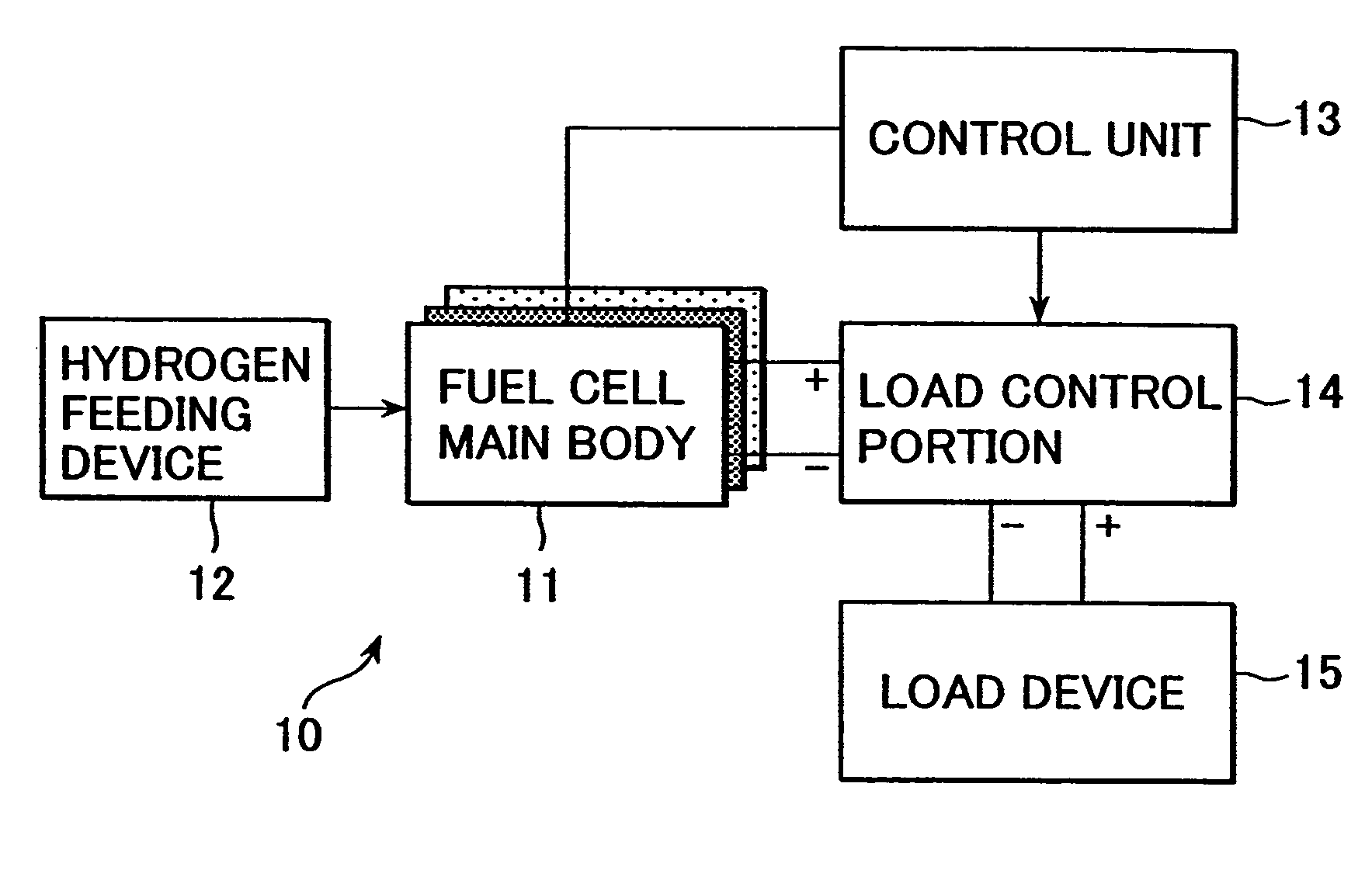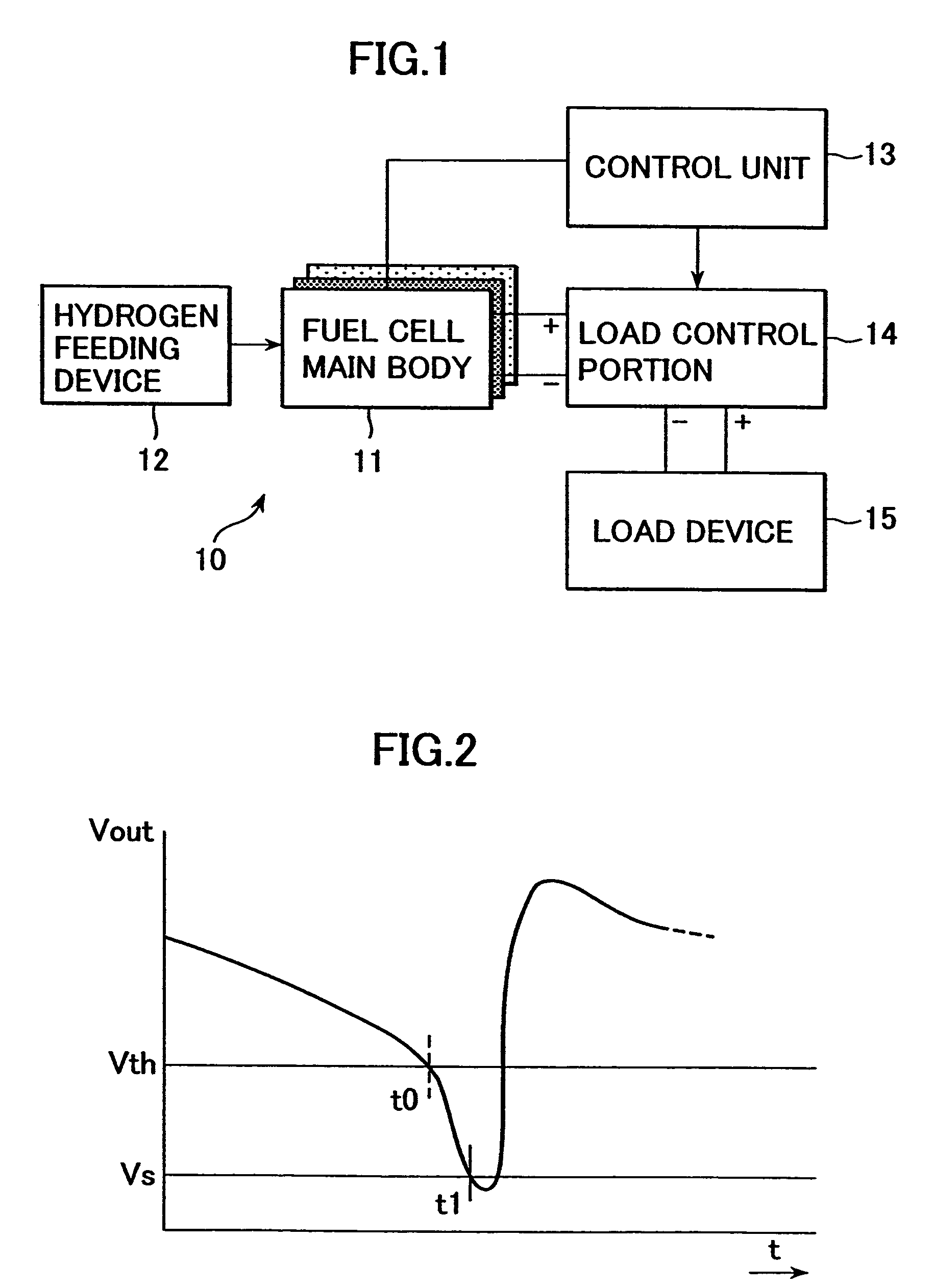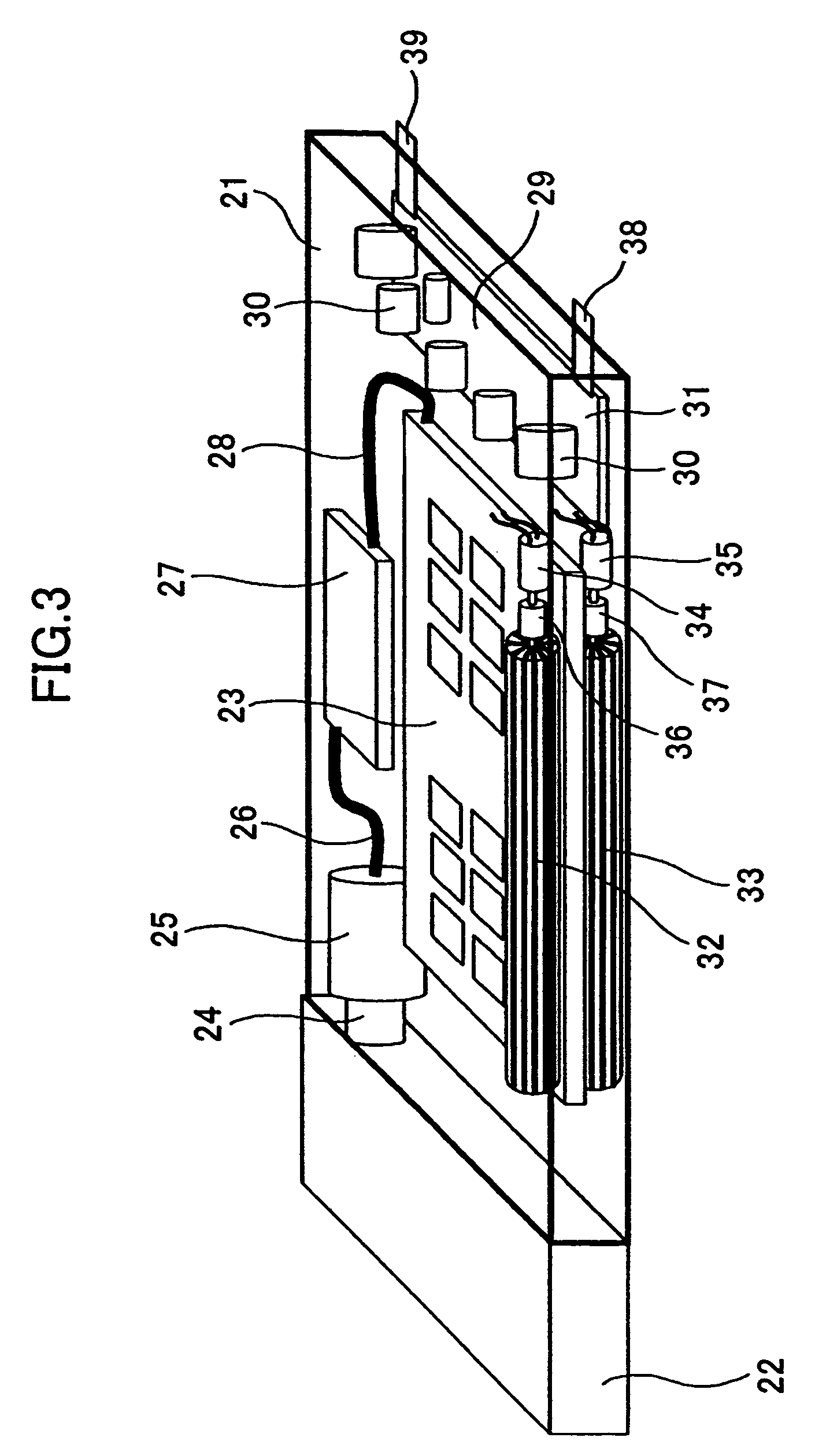[0008]The present invention provides a fuel cell apparatus and a method for controlling a fuel cell, which can prevent the problems of the low output during the operation or at the start of operation.
[0010]
Fuel cells are known to be problematic in that the electrolyte membrane is dried to lower the
ion-exchange characteristics when lowering the load current or increasing the air feed rate during the operation or when allowing the fuel cell to stand for a long time, so that the output of the fuel cell is considerably lowered. In the present invention, a load control portion for permitting a load on the fuel cell to vary depending on the output state of the fuel cell or an air feeding control portion is provided in the fuel cell and controlled to increase the load current or suppress the air feeding when the output characteristics are lowered, the
internal resistance value is increased, and / or the like thus solving the above problem.
[0011]In an embodiment of the present invention, the bypass circuit is provided and therefore, if, for example, the output characteristics decreases due to
drying of the oxygen electrode, the bypass circuit is operated and controlled to permit a load current on the fuel cell to vary depending on the output state, making it possible to intentionally increase the amount of water formed. The formed water can suppress
drying of the oxygen electrode and also let the oxygen electrode be in an appropriate wet state. In one embodiment of the present invention, the first predetermined value is in the range of, for example, about 0.01 V to about 0.8 V per
electricity generator, and set to be, for example, about 1% to about 95% of a usual
electromotive force. Alternatively, the first predetermined value may be set to be a value by the amount lowered from the
electromotive force that is typically or generally produced during operations.
[0013]In the fuel cell according to an embodiment, air is fed to the oxygen electrode while feeding a fuel to the fuel electrode to cause
proton conduction in the electrolyte. The amount of the
proton conduction varies in accordance with the load current connected to the fuel cell, and, if the load current value is smaller, the output
voltage increases to reduce
heat generation and, conversely, if the load current is larger, the amount of the proton conduction increases and an amount of formed water increases. The reason for this is that the reaction on the oxygen electrode is promoted. For example, if the output characteristics are lowered due to
drying of the oxygen electrode, the load control portion is operated and controlled to permit a load current on the fuel cell to vary depending on the output state, making it possible to intentionally increase the amount of water formed. The water formed can suppress drying of the oxygen electrode as well as let the oxygen electrode be in an appropriate wet state.
[0017]In the fuel cell, air is fed to the oxygen electrode while feeding a fuel to the fuel electrode to cause proton conduction in the electrolyte. The amount of the proton conduction varies depending on the load current connected to the fuel cell, and, if the load current becomes larger, the amount of the proton conduction increases and an increased amount of water is formed. The feed rate of air fed to the oxygen electrode of the fuel cell is ideally operated so that, for example, during the operation, the amount of water formed and the amount of
moisture evaporated which depends on the air feed rate are steadily in equilibrium, but the air feed rate is changed by the air feeding control portion and controlled so as to, for example, suppress
evaporation of
moisture from the fuel cell surface, thus making it possible to suppress drying of the oxygen electrode and let the oxygen electrode be in an appropriate wet state.
[0019]If the output characteristics or
internal resistance characteristics of the fuel cell change, the feed rate of air fed to the fuel cell is controlled to be smaller than usual (i.e., under usual, normal and / or standard operating conditions), and thus, not only can drying of the oxygen electrode in the fuel cell be suppressed, but also the oxygen electrode can be in an appropriate wet state, and monitoring the necessity of this directly from the output characteristics or
internal resistance characteristics of the fuel cell makes it possible to quickly deal with the matter even if a failure occurs in the
electricity generation. In the present specification, the measurement of electromotive force encompasses measurements and calculations of an output current and an internal resistance of the fuel cell or similar parameters.
 Login to View More
Login to View More  Login to View More
Login to View More 


